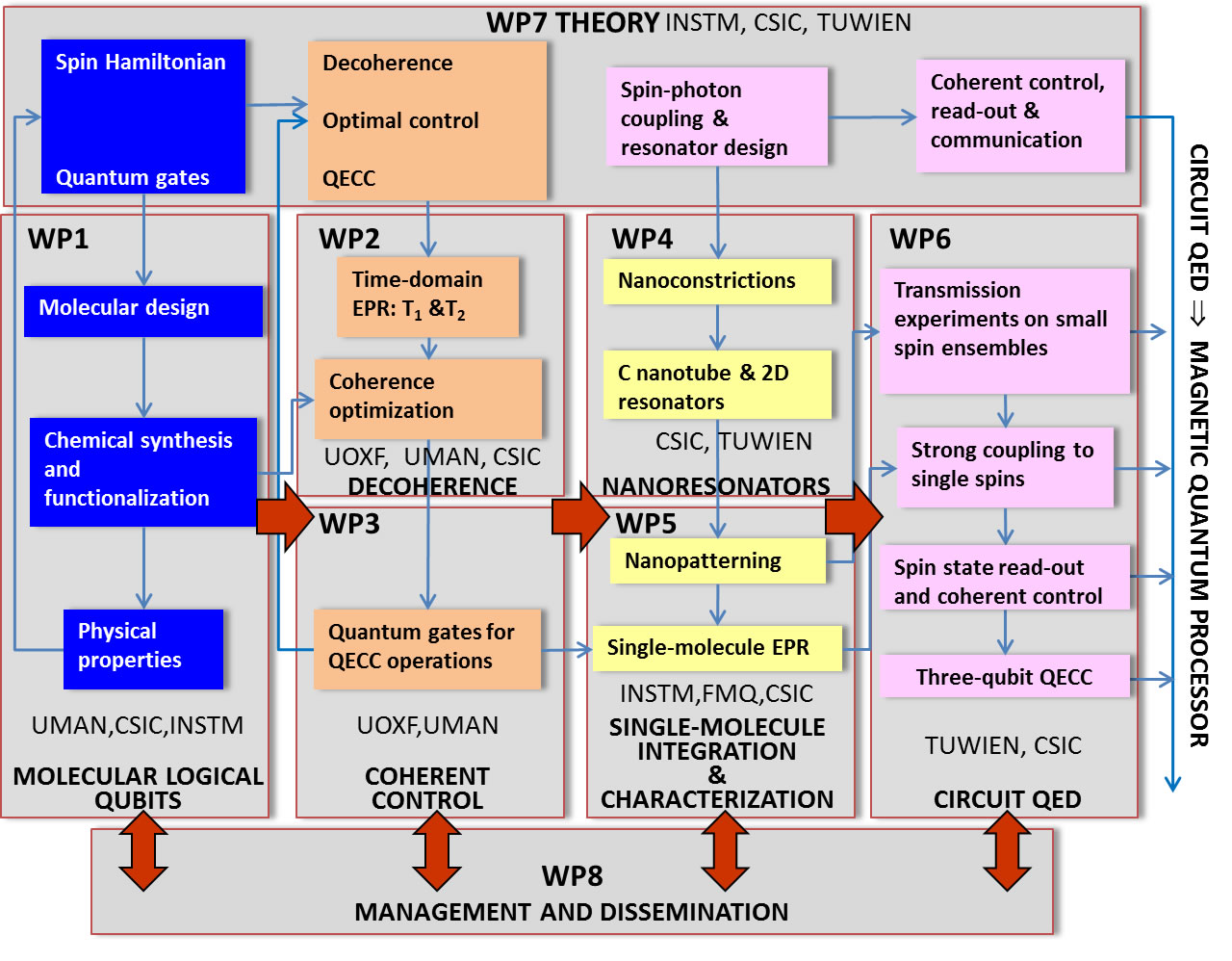Workplan
The structure of the work plan and the inter-relation between its components is shown in the figure below. Tasks are organized into seven scientific/technological work packages (WPs) plus one WP devoted to the management of the project. Work towards each of the two main breakthroughs, namely the realization of QECC in molecules and the attainment of strong spin-photon coupling, is organized in three experimental WPs and guided by theoretical work. These WPs cover a sequence of logical steps needed to reach the project goals. Two alternative paths are proposed to carry out most of the tasks, especially the most ambitious ones, in order to cope with their inherent risks.

In WP1, molecules hosting from 3 to 9 spin qubits are designed, synthesized and characterized by different techniques. A crucial target is the realization of molecules with three and seven addressable (i.e. magnetically inequivalent) qubits, which can implement repetition QECCs.
WP2 focusses on measuring coherence times T2 of relevant magnetic transitions on bulk molecular samples and on optimizing coherence by chemical methods. A key goal is to reach T2 values above 100 µs for potentially interesting molecules.
The related WP3 uses similar experimental tools (pulsed-EPR) to provide proof-of-concept realizations of the basic quantum gates required to encode and decode a logical qubit and to detect and correct errors. The target is to identify and perform a set of suitable gates compatible with the spin interactions in the molecule.
WP4 deals with the fabrication and test of novel superconducting resonators able to enhance the microwave magnetic field near superconducting nanobridges. These devices must be operational and show sufficiently high quality factors for realistic frequencies and magnetic fields.
WP5 develops methods to deposit molecules onto solid substrates and devices, characterizes these molecular deposits, and determines magnetic energy levels and spin coherence of individual molecular spins. Key aspects are achieving high spatial resolution in the transfer of molecular submonolayers to devices and the attainment of sufficiently long coherence time scales for isolated molecules.
WP6 is devoted to explore the coupling of single spins to single photons using superconducting nanoresonators. The target is to achieve strong coupling for test-bed molecules (one qubit) and then proceed to coherently control and read-out spin states of progressively more complex ones (three qubits).
WP7 provides theoretical guidance to all experimental WPs, and tools to analyze the results. Important outcomes of this work are the complete understanding of the spin excitations and decoherence in multiqubit molecules and the application of this information to create suitable sets of quantum gates and to implement quantum error correction codes. This WP must also provide the basis for the design and optimization of nanoresonators and for the application of the spin-photon coupling to perform basic quantum operations on single molecules.
WP8 provides management and coordination of all scientific activities, promotes dissemination and protection of its results, and sets up efficient communication channels within the consortium and with society.
